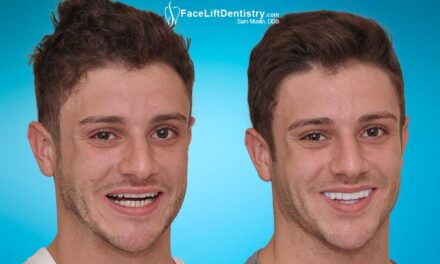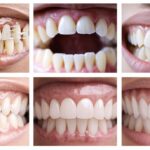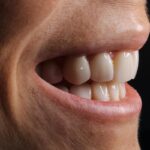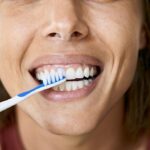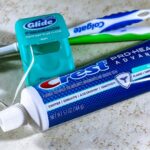Everyone does it. You know…when no one is watching. It is wishful thinking that takes the form of face-pulling in front of a mirror. With a push on the temples, you achieve an instant-facelift. Turn sideways and use your thumb to tug on the extra skin at the neck. Lift your chin and bye-bye weak profile. The results, however, are fleeting – nothing more than playacting in front of a mirror.
BUT, news flash! California dentist Dr. Sam Muslin can turn those wishes into reality. He has perfected a quick and painless dental revision method to improve your small chin and your profile without surgery or implants. It’s called Face Lift Dentistry®.
“Small chins are larger chins with overbite correction. By treating the overbite, I can deliver twice the impact for my patients. They get a more comfortable jaw, a better chewing surface, and an attractive profile that builds their confidence,” says Dr. Muslin, DDS, who was designated “LA’s Best Cosmetic Dentist 2016.”
Anti-aging Face Lift Dentistry® corrects small chins without surgery. Older, rounder faces have weakened features. Teeth wear down, giving the skin less scaffolding on which to hang. The face looks short. Smaller chins recede backward as the bite worsens with age. Skin begins to sag, wrinkles deepen, and lips appear to be thinner as premature aging sets in.
Our image- and media-driven culture would suggest that invasive plastic surgery is the only option for a weak profile and small chin complicated by extra fat deposits in the upper neck region. A chin implant, lip-plumping injections, liposuction, soft tissue fillers would be the likely intervention suggestions. They are medical procedures that come with the risk of infection, adverse reaction to anesthesia, bruising, allergic reaction, edema, a hefty dose of pain, and significant downtime.
Traditional advice for an overbite and weak chin would include braces and/or jaw surgery, also known as orthognathic (or-thog-NATH-ik) surgery. Braces are typically on 6-18 months prior to surgery. Jaw surgery involves a two-day hospital stay and then a six-week recovery at home.
In surgery to correct an overbite, the jawbones are cut and realigned. Screws, bone plates and wires are used to set the new position. In surgery to fix a small chin – a procedure called “genioplasty” – the front part of the lower jaw is surgically divided and moved forward. It is secured with screws. In some cases, bone may need to be borrowed from another place in the body to shore up the surgery site.
Once the jaw heals from surgery, patients usually have another stint with braces to finish alignment of the teeth. The whole ordeal could be a two-year process or longer. The daunting timeline is particularly problematic for full-time students or those with a demanding job. If you are a parent of small children and are considering jaw surgery…good luck with that!
Many patients can’t make this kind of time commitment. That’s why the Facelift Dentistry® method is such a big hit. It gives a viable option for those opposed to time-sucking surgery that offers a dismal “BOGO” deal: pain and risk.
“Most people who have a small-looking chin also have an overbite. The overbite shifts the jaw toward the patient’s ears. This makes the chin appear smaller than it actually is. The patient ends up suffering from headaches, neck and jaw pain – even sleeping problems. They are physically compromised and hate their looks. Regular veneers don’t address these issues holistically or in their entirety. By using 3-D assessment, I identify the bite problems and resolve them,” explains Dr. Muslin. “A small chin is given the prominence it deserves. Health and well-being are not too far behind.”





